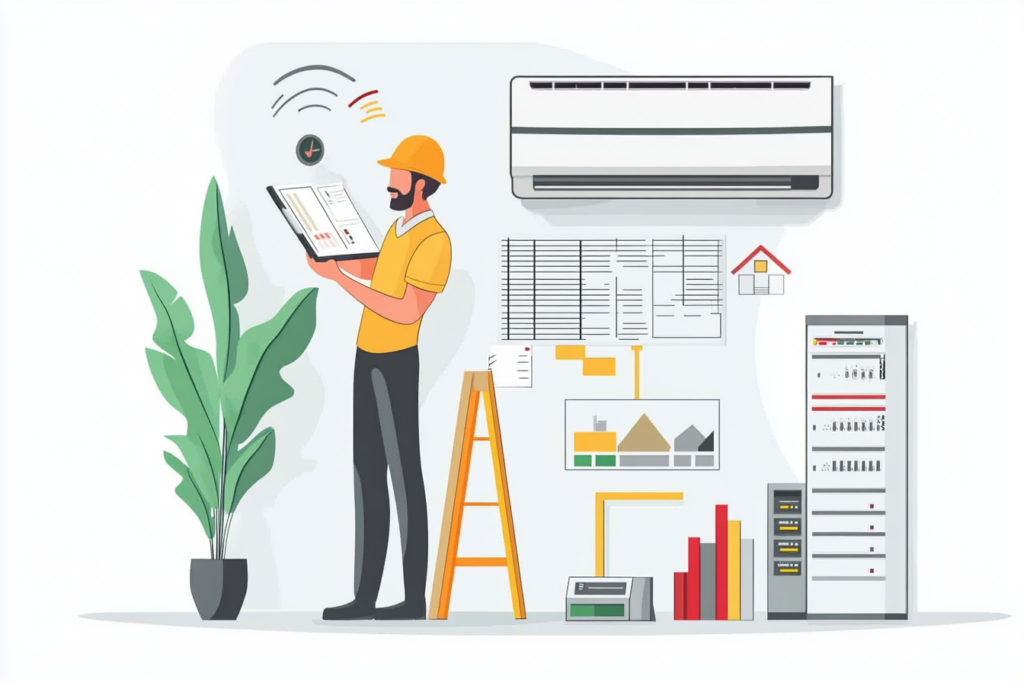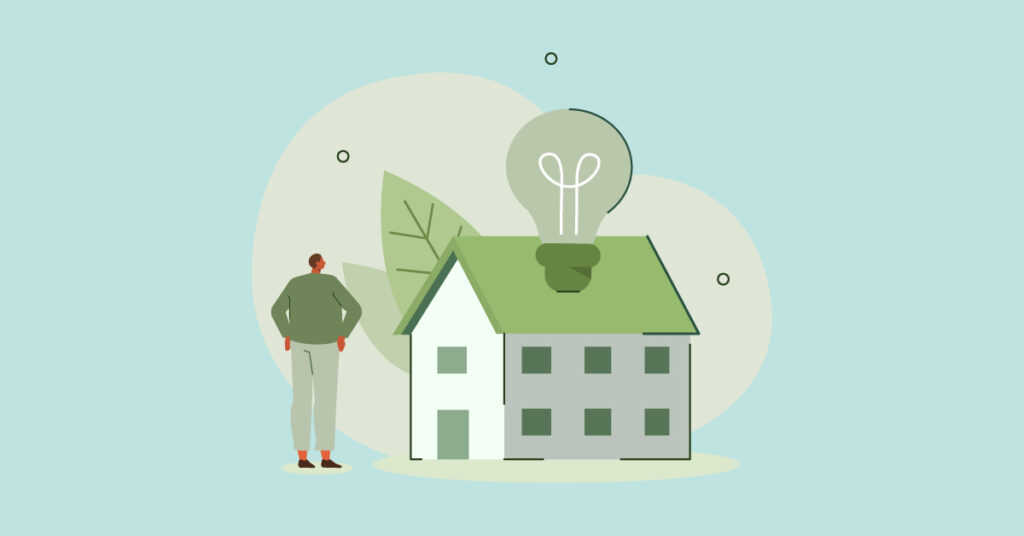Have you noticed your energy bills start creeping up month over month? Or maybe your home doesn’t stay at a comfortable temperature from room to room. Either way, it could mean that a home energy audit is the solution. A home energy audit looks at all the factors impacting how much energy you use and recommends improvements to reduce your energy dependency. Ultimately, these audits aim to improve your comfort, lower utility costs, and reduce your overall environmental impact.
But what exactly happens during a home energy audit? And how does it actually help?
What Is a Home Energy Audit?
A home energy audit or assessment is an inspection that focuses on energy. It looks at how your home uses energy and finds places where it’s inefficient. Expect a report on everything from insulation and ventilation to HVAC performance and appliance efficiency.
Certified energy auditors typically follow industry standards, such as those set by the Residential Energy Services Network (RESNET) or the U.S. Department of Energy.
What to Expect During the Audit

An energy audit usually wraps up in less than four hours, from the initial consultation to the final report. Let’s take a look at what happens during a normal energy audit. Everything starts during that first consultation. Your auditor will ask you questions about your energy use and concerns. They might ask questions like, “Have you noticed any drafts?” or “Is your home colder in some rooms than others?” They’ll also take a look at your past energy bills to better understand how much energy you use and when you use energy the most.
After the consultation, the audit starts. Your inspector will check the home’s exterior, interior, ventilation systems, and other elements of the HVAC system.
1. Exterior Inspection
An auditor starts by looking for issues on the exterior of your home, looking for gaps or cracks in the foundation or poorly mounted doors and windows that could allow conditioned air to leak outside.
2. Interior Evaluation
Inside your home, the auditor will look at insulation in the attic, basement and walls. Check the sealing on your doors and assess the age and condition of your HVAC systems. They will also look at the type of lighting systems you use (incandescent versus energy-efficient LEDs) and your appliances.
3. Blower Door Test
One of the key components of a home energy audit is the blower door test. Auditors place a powerful fan in an exterior doorway during this test and depressurize the house. This lets the auditor test how much air is leaking from doors, windows and other gaps or cracks.
4. Duct Leakage Testing (If Applicable)
If you have forced-air heating and cooling, the ductwork may also be tested for leaks. Leaky ducts can greatly reduce system efficiency and cause uneven heating and cooling.
Getting the Report
After the inspection, the auditor compiles their findings into a report that you can use to make decisions about home improvements. This report will highlight any issues causing your home to lose energy, cost-effective upgrades that can help, estimated savings related to each recommendation, and an action plan for putting these upgrades into practice.
How Home Energy Audits Help
While the process might seem technical, the benefits are clear—and often measurable. By identifying inefficiencies, a home energy audit can help you find the most effective home repairs and updates for lowering your utility bills. Common fixes like sealing leaks or adding insulation often yield noticeable savings within the first year.
According to the U.S. Department of Energy, households can save between 5% and 30% on their energy bills with audit recommendations in hand.
2. Improved Home Comfort
Drafty rooms and uneven temperatures can make a home uncomfortable year-round. A home energy audit helps identify the root causes of these issues—often due to poor insulation or air leakage—so you can fix them.
3. Increased Home Value
High energy bills mean buyers aren’t interested, but an energy audit can go a long way toward proving your home is up-to-date with modern efficiencies. Give your home value a boost by demonstrating the results of your audit and upgrades.
4. Environmental Benefits
Reducing your energy consumption directly lowers your home’s carbon footprint. Whether your motivation is cutting costs or going green, a home energy audit is a practical first step.
5. Better Indoor Air Quality
Air leaks can allow pollutants, allergens, and humidity to enter your home. By identifying and sealing these gaps, you’re not just saving energy—you’re also improving your indoor air quality and overall health.
6. Access to Incentives and Rebates
Several utility companies and local government programs offer rebates for energy-efficient upgrades. Some even subsidize the cost of the audit itself. A certified audit is often required to qualify for these incentives.
Check with your local utility provider or state energy office for available programs in your area.
Efficiency Improvements Start With an Audit
A home energy audit isn’t just for older homes or those with obvious issues. From drafty windows to leaky ductwork, small inefficiencies can add up—both in cost and environmental impact. A home energy audit helps you take back control, providing the data and direction needed to make smarter, greener decisions for your home.
You might also be interested in: Unlocking the Power of Renewable Energy Options for Homes




